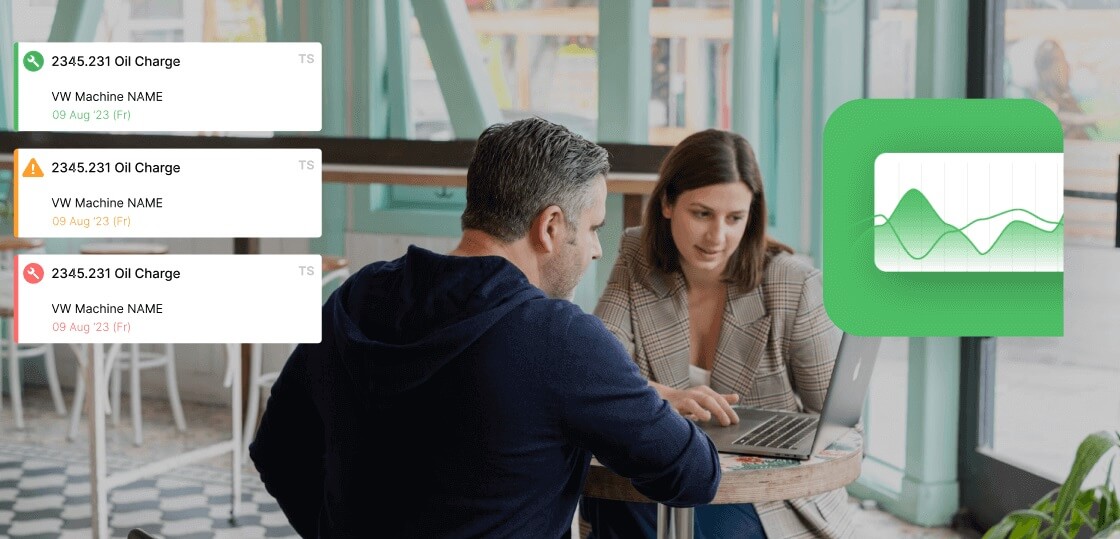TRACTIAN has made waves in the maintenance market with its "Plug and Play" vibration sensors and AI platform.
If you have zero existing sensors and want a quick "box of gadgets" to monitor motors, it is a strong product.
But what if you already have data?
Most manufacturers ("Paula" and "Mike") already have PLCs, SCADA systems, or existing sensors on their machines.
The limitation of TRACTIAN is that it is primarily a vehicle to sell TRACTIAN Hardware.
It focuses heavily on vibration and electrical signatures, often ignoring the broader context of OEE (Production Data) and General Maintenance (Work Orders).
If you want a Software-First platform that integrates all your data sources (not just vibration), here are the 5 best TRACTIAN alternatives for 2025.
1. Fabrico: The "Open Reliability" Solution
Best For: Manufacturers who want to connect PLCs, OEE, and Maintenance in one app.
Fabrico is the "Software-First" alternative. Instead of forcing you to buy proprietary sensors, Fabrico connects to the equipment you already own.
Why Manufacturers Switch to Fabrico:
-
Hardware Agnostic: Fabrico connects to Siemens, Allen-Bradley, Omron, and generic IoT sensors via standard protocols (OPC UA, MQTT). You are not locked into a single sensor vendor.
-
Integrated OEE: TRACTIAN focuses on Machine Health (Vibration). Fabrico focuses on Total Productivity. We combine health data with OEE (Speed/Quality) to give you the full picture. A machine might have low vibration but still be running at 50% speed—Fabrico catches that.
-
Full CMMS: Fabrico is a complete Maintenance Management System. It handles spare parts, purchasing, and preventive maintenance (PM) scheduling deeply, whereas TRACTIAN is primarily a monitoring tool.
-
Computer Vision: Fabrico uses cameras to detect visual faults (jams, debris) that vibration sensors miss.
The Verdict: If you want to manage your entire factory, not just your motor bearings, Fabrico is the comprehensive choice.

2. Augury
Best For: High-end Vibration Analysis (AI).
Augury is the heavyweight champion of AI-driven vibration analysis.
-
Pros: The AI diagnosis is incredibly accurate. It tells you exactly what is wrong (e.g., "Inner Race Bearing Fault") rather than just "High Vibration."
-
Cons: Like TRACTIAN, it is a "Walled Garden." You use their sensors and their platform. It is expensive and focused strictly on rotating equipment. It does not replace your CMMS.
-
The Difference: Augury is for deep diagnostics; Fabrico is for operational execution.
3. MachineMetrics
Best For: CNC Machine Monitoring.
If your "Assets" are CNC machines, MachineMetrics captures data directly from the control unit, which is far more accurate than an external vibration sensor.
-
Pros: It pulls "Spindle Load" and "Tool Life" data directly from the machine's brain. No external sensors needed.
-
Cons: It focuses on the machine controller. It is less effective for balance-of-plant assets (conveyors, boilers) where external sensors might be needed.
-
The Difference: MachineMetrics reads the computer; TRACTIAN reads the vibration; Fabrico integrates both.
4. eMaint (Fluke)
Best For: Fluke Hardware users.
If you trust the Fluke brand, eMaint is the integrated software partner.
-
Pros: Seamless integration with Fluke's vast ecosystem of handheld and wireless sensors.
-
Cons: The software interface is dated compared to modern startups like TRACTIAN or Fabrico. It feels like a legacy enterprise tool.
-
The Difference: A lateral move for hardware connectivity, but a downgrade in User Experience (UX).
5. Limble CMMS
Best For: Managing the "Fix," not the "Sensor."
If you realized that buying sensors was premature and you just need to organize your team, Limble is the best "Back to Basics" tool.
-
Pros: Extremely easy to use for work orders and PMs.
-
Cons: It has very limited native IoT/Sensor capabilities. It relies on APIs to get data from machines.
-
The Difference: Limble handles the human work; TRACTIAN handles the sensor data.
Comparison Matrix: Sensors vs. Software
| Feature |
Fabrico |
TRACTIAN |
Augury |
MachineMetrics |
| Primary Focus |
Maintenance & OEE |
Vibration/Energy |
Vibration AI |
CNC Data |
| Hardware Strategy |
Open / Agnostic |
Proprietary |
Proprietary |
Controller-based |
| CMMS Features |
✅ Full Suite |
✅ Basic |
❌ No |
❌ No |
| OEE Integration |
✅ Native |
⚠️ Basic |
❌ No |
✅ Native |
| User Experience |
Modern |
Modern |
Modern |
Technical |
Summary: Don't Buy a Lock, Buy a Key
TRACTIAN is a great product if you want a "Subscription Sensor."
-
Stick with TRACTIAN if: You have zero existing data infrastructure and want a quick way to monitor a few critical motors.
-
Choose Augury if: You have super-critical turbines where a failure costs millions.
-
Choose Fabrico if: You want to build a Smart Factory. If you want to connect your existing PLCs, manage your spare parts, track OEE, and empower your technicians with a single app, Fabrico is the scalable solution.
Own your data.
Book a Demo with Fabrico to see how we connect to the hardware you already have.








